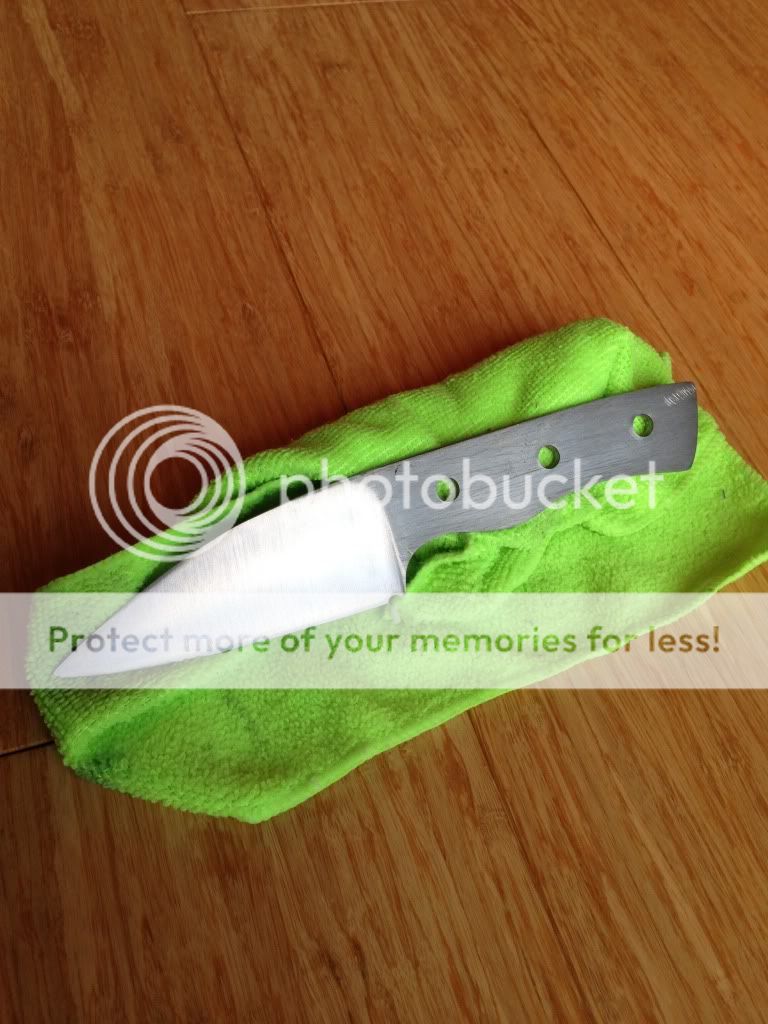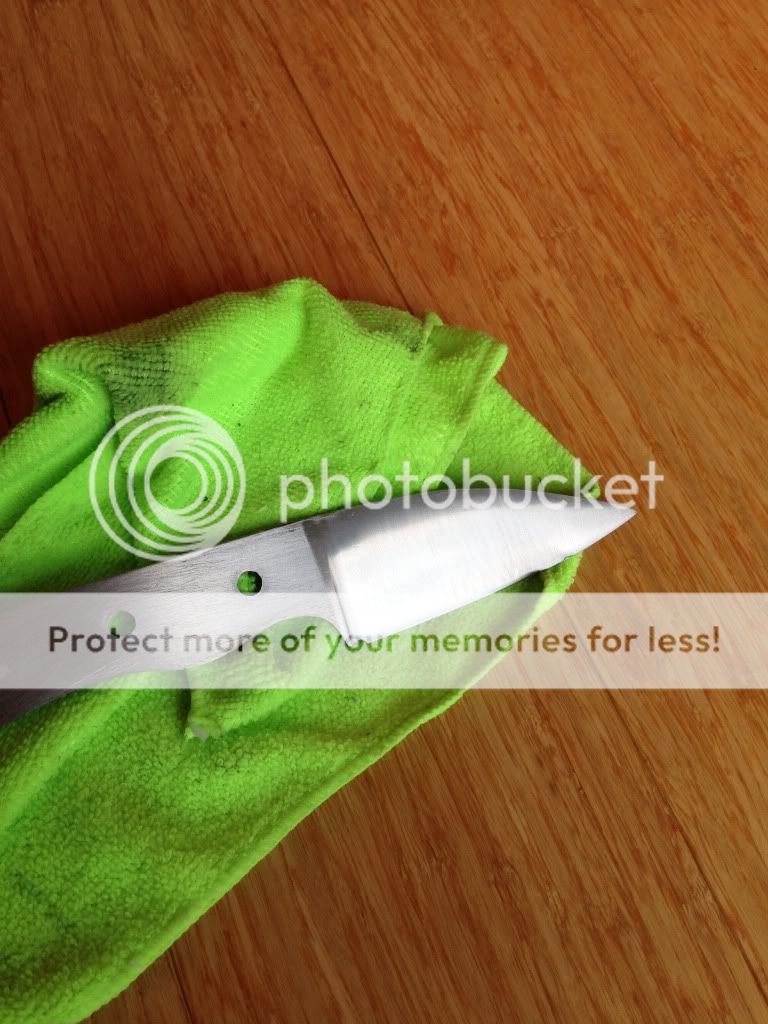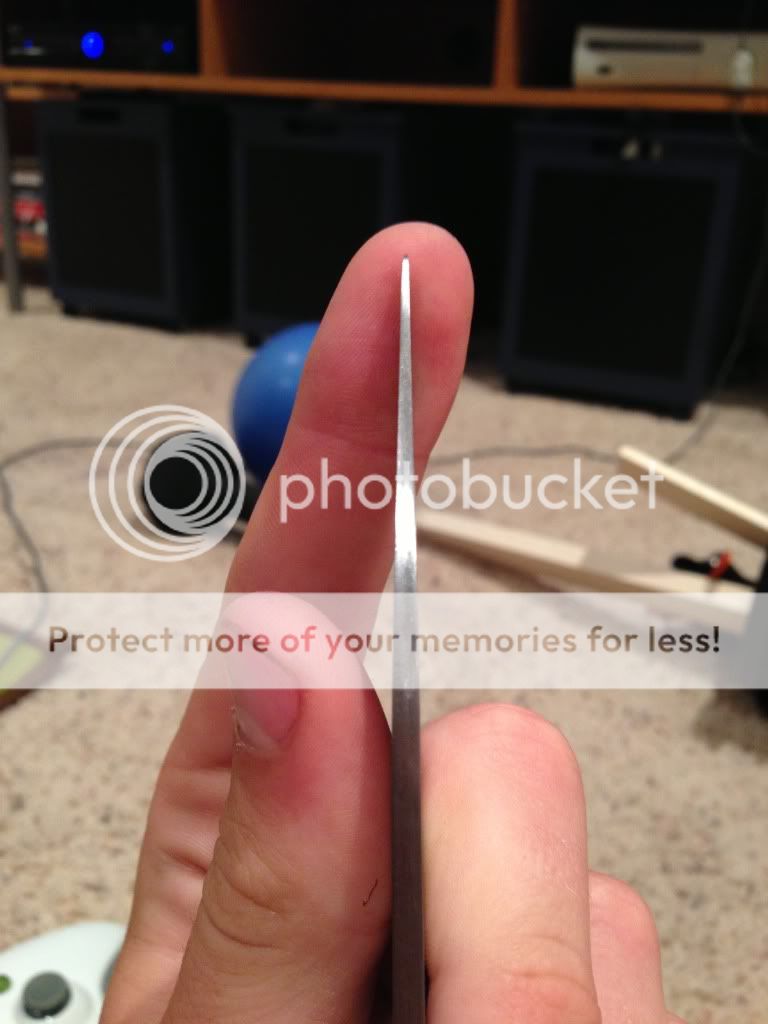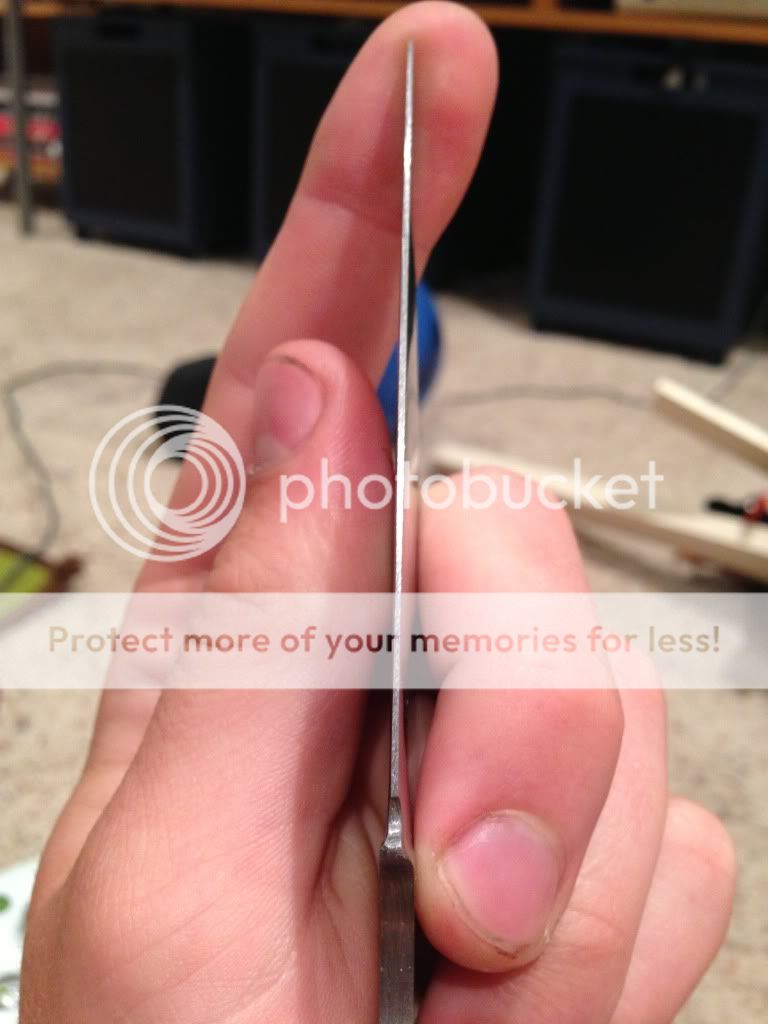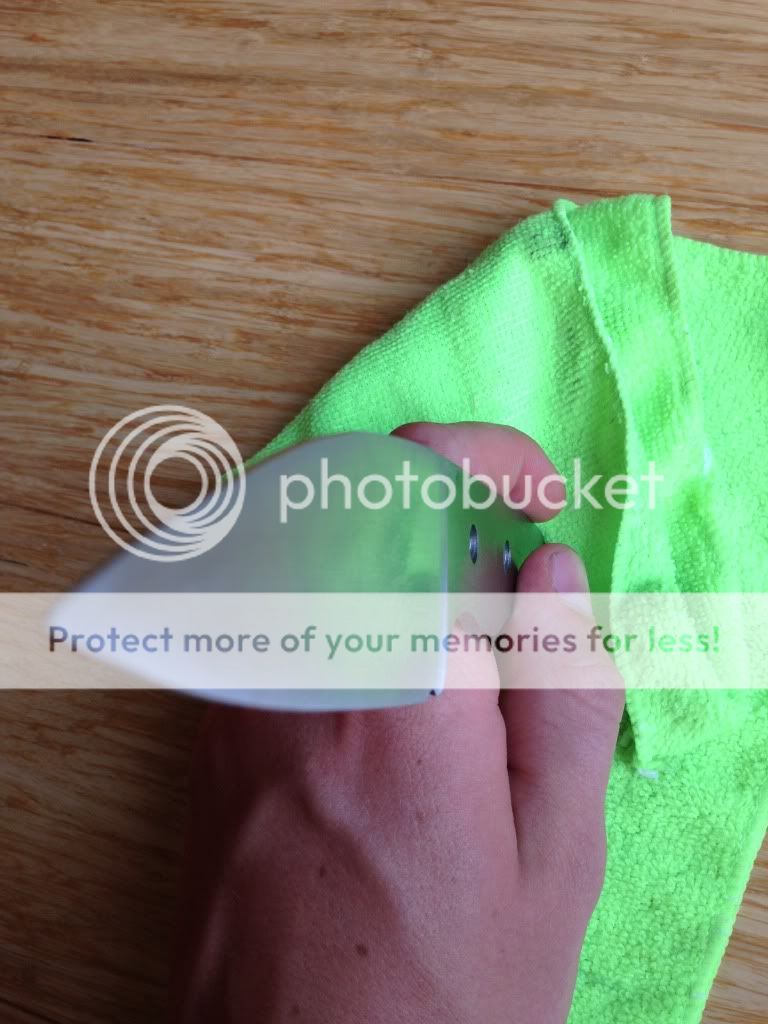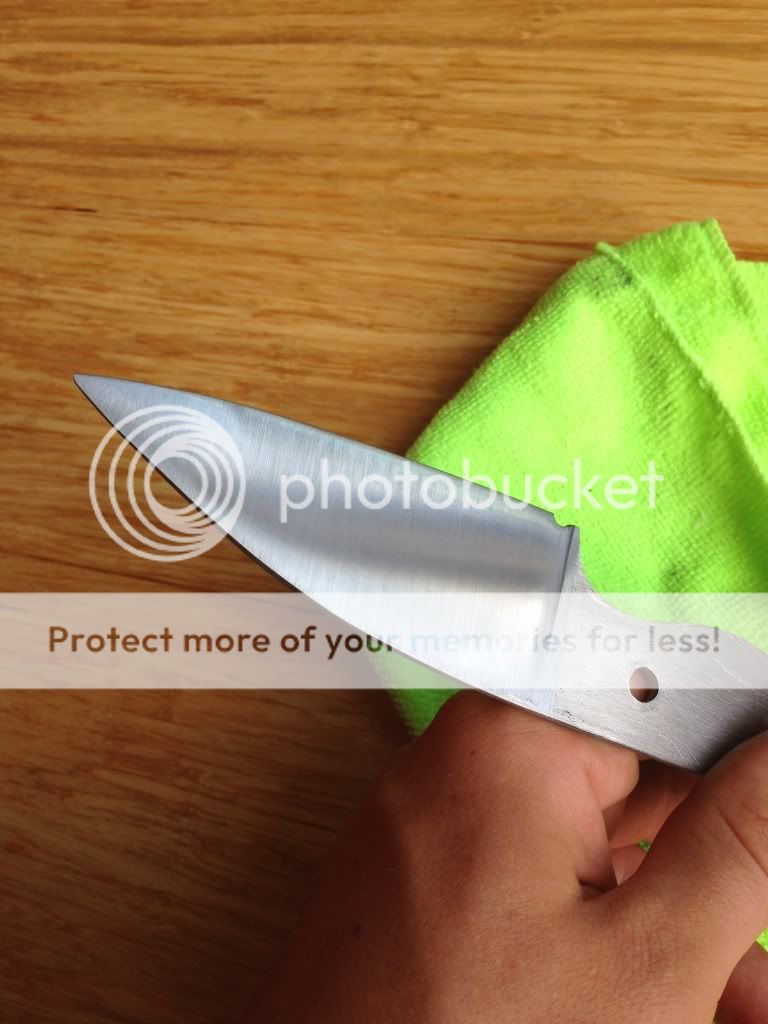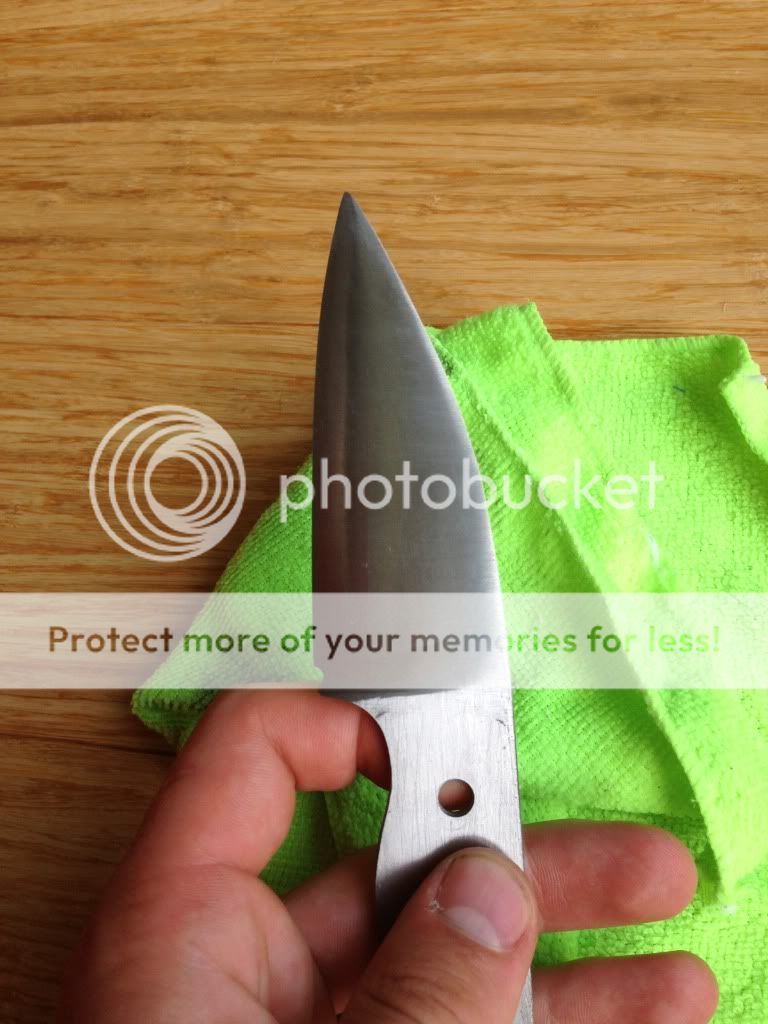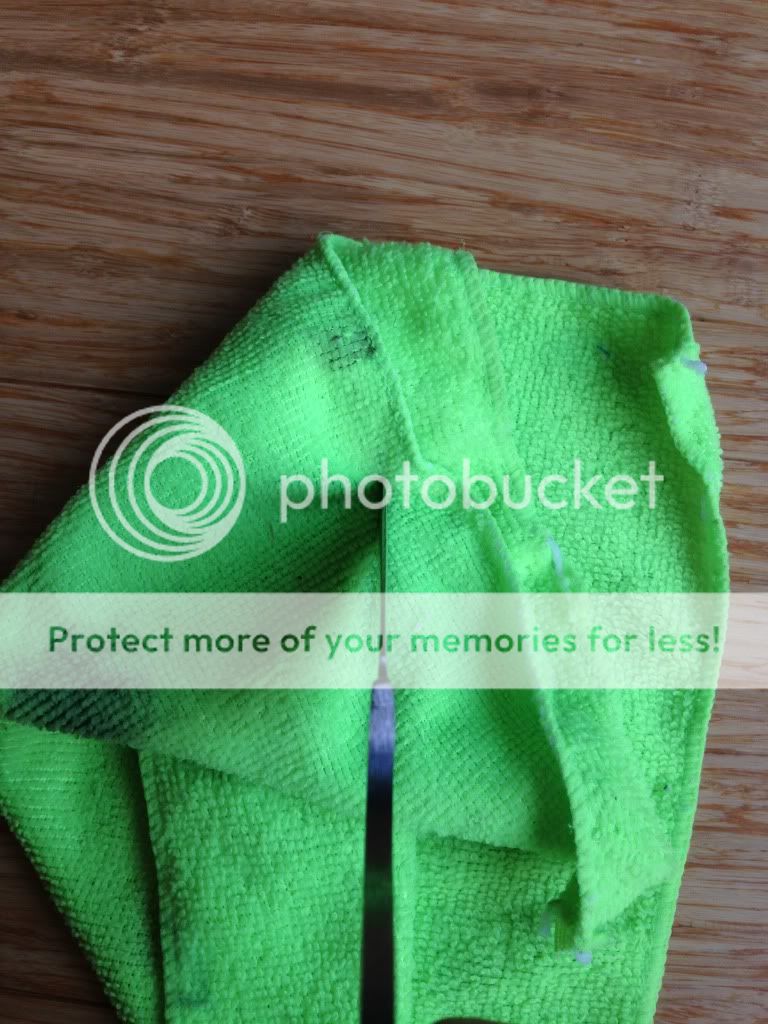- Joined
- Mar 19, 2010
- Messages
- 1,154
I just started my first knife today! It's turning out much better than I thought, hopefully my beginner's luck keeps coming. 
Starting hacksawing the blade out from the bar stock.
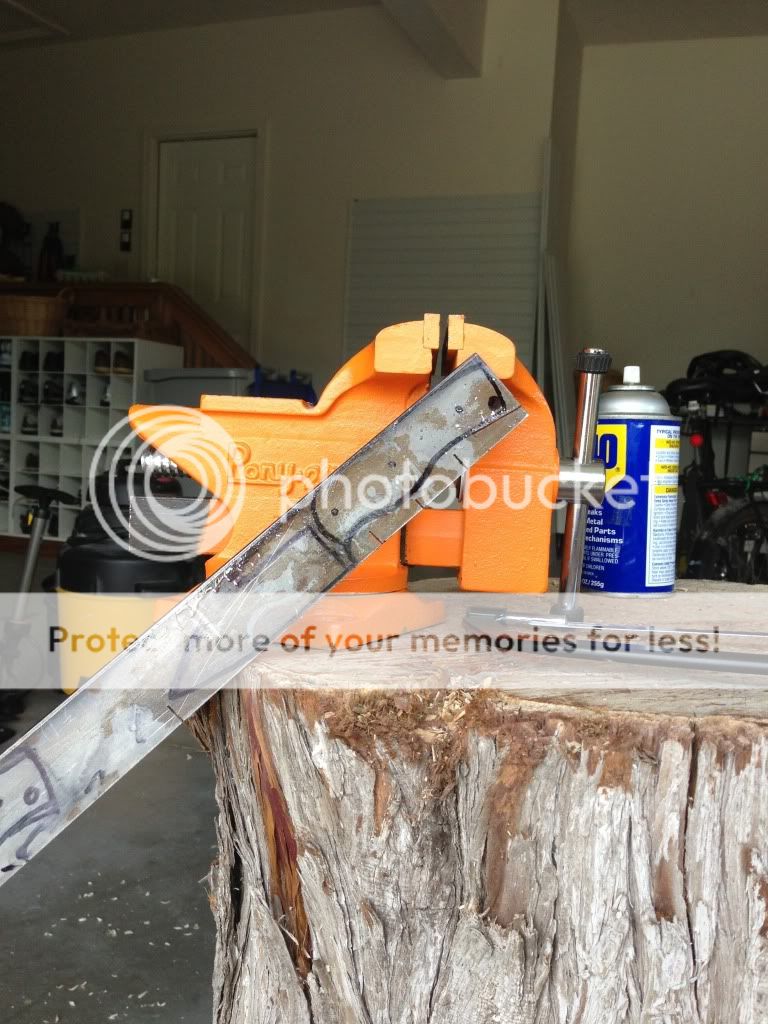
Now I smoothed it out with my 1x30 sander, a half-round file, and a little Dremel work.

It's 1084 from Aldo with around a 3.5" blade and 4-4.5" handle (I haven't measured it yet).
I just have one question, how much pressure should I use when I start the grind? I'm starting with a new 60 grit Norton Blaze belt.
Any constructive criticism is greatly appreciated.
Starting hacksawing the blade out from the bar stock.

Now I smoothed it out with my 1x30 sander, a half-round file, and a little Dremel work.

It's 1084 from Aldo with around a 3.5" blade and 4-4.5" handle (I haven't measured it yet).
I just have one question, how much pressure should I use when I start the grind? I'm starting with a new 60 grit Norton Blaze belt.
Any constructive criticism is greatly appreciated.

